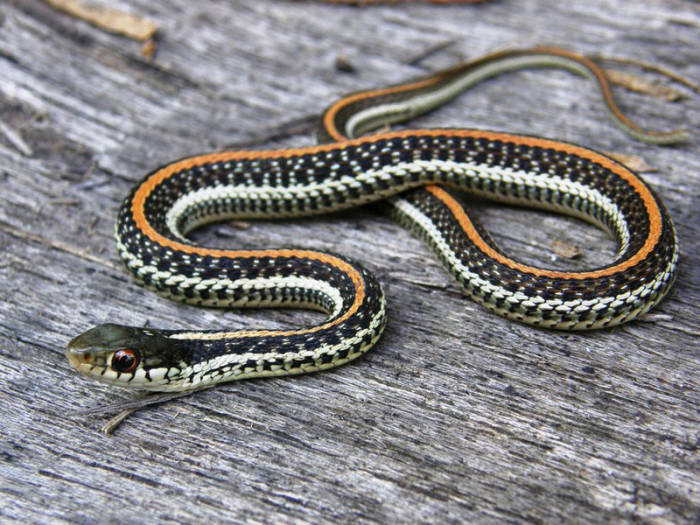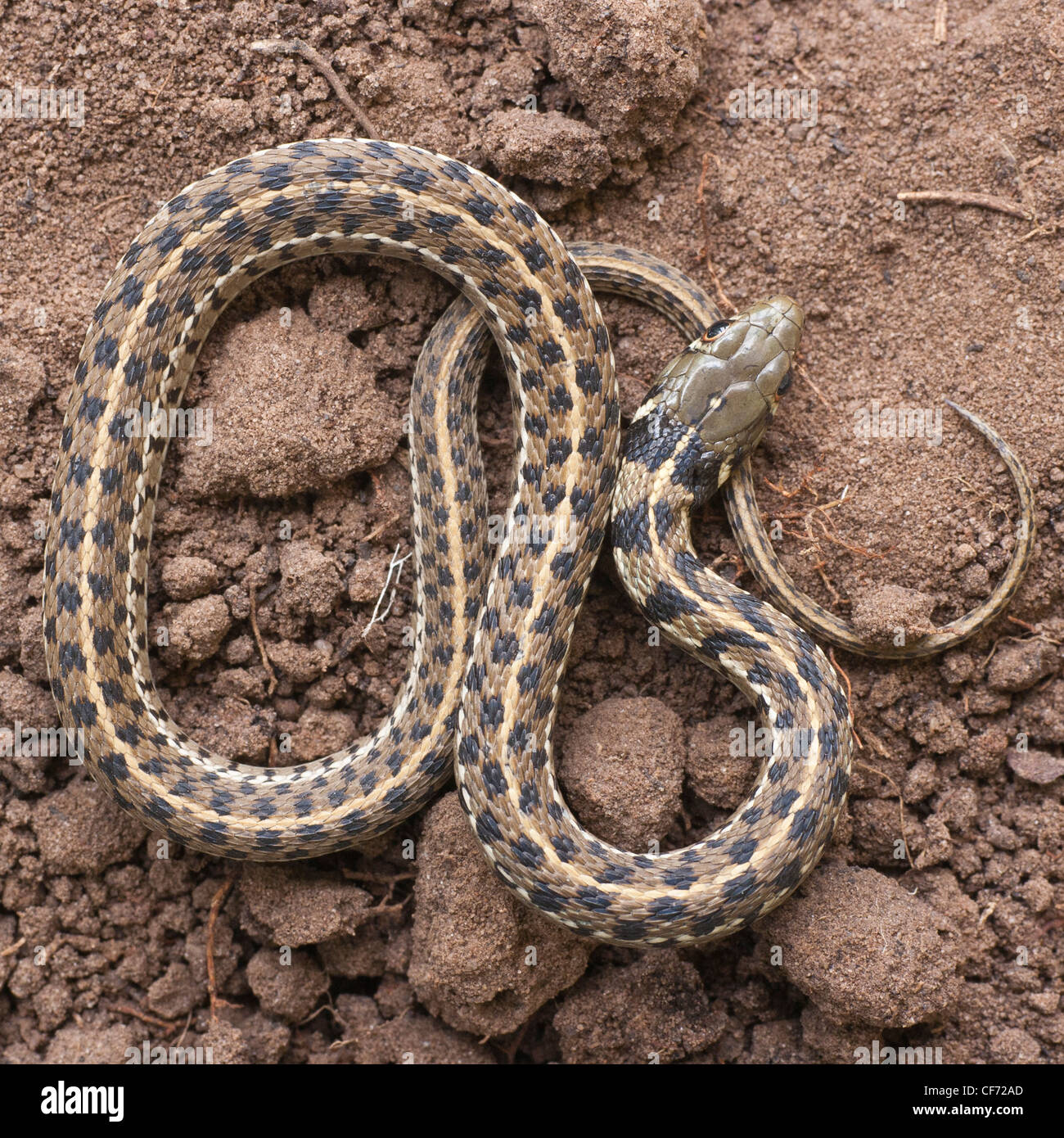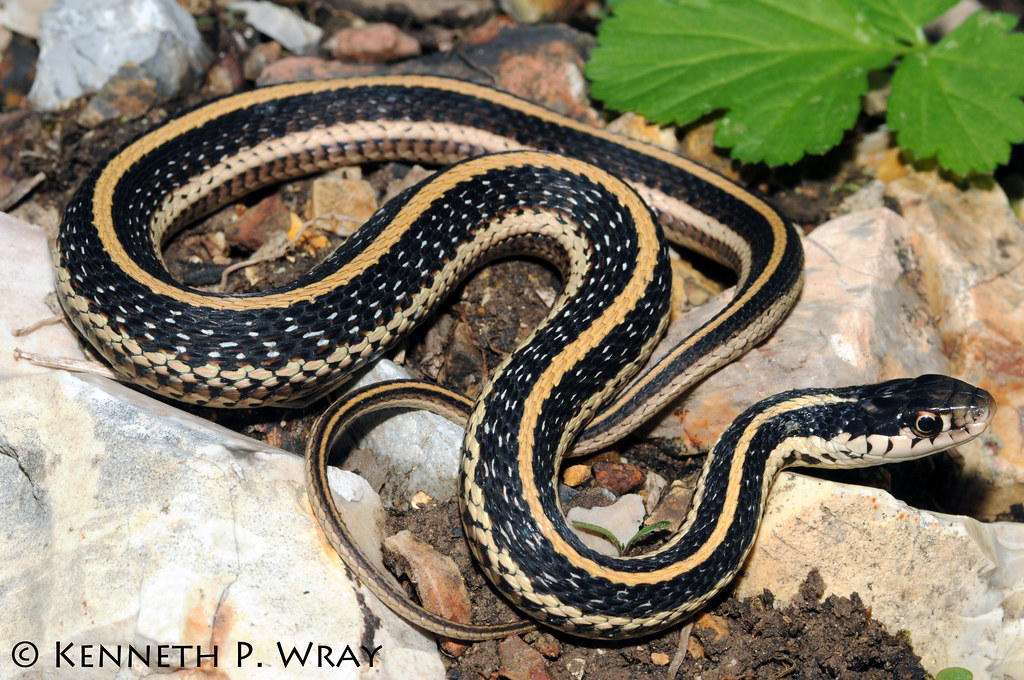Discovering The **Texas Garter Snake**: A Backyard Friend
The **Texas Garter Snake**, known scientifically as *Thamnophis sirtalis annectens*, is a fascinating creature that often shares our natural spaces. It's a specific kind of common garter snake, which means it carries many of the traits we associate with these generally calm reptiles. This particular snake, you know, makes its home across parts of the United States, especially in our own Texas. It's quite a special part of the local wildlife, often seen near water sources where it can really thrive, more or less, in its natural environment.
For anyone who enjoys spending time outdoors, or perhaps, tending to a garden, knowing a bit about the **Texas Garter Snake** can be really helpful. These snakes are, as a matter of fact, quite harmless and many people even consider them good to have around. They play a role in the local ecosystem, helping to keep things balanced. Learning about their habits and where they live helps us appreciate them, and perhaps, understand our natural surroundings a little better, too it's almost.
In this piece, we'll take a closer look at the **Texas Garter Snake**, exploring what it looks like, where it prefers to stay, and what it does day-to-day. We'll also talk about why it's not a danger to people and why it's, very, very, often thought of as a gardener's best friend. This creature, you know, has a unique life cycle and behaviors that are worth understanding if you want to know more about the animals living near us.
Table of Contents
- About the Texas Garter Snake
- What It Looks Like
- Home and Habitat
- Daily Life and Behavior
- Not a Threat
- Other Garter Snakes in Texas
- Conservation Status
- Questions People Often Ask
- Living Alongside the Texas Garter Snake
About the Texas Garter Snake
The **Texas Garter Snake** is a specific kind of snake that holds a special place in the natural world. It's a subspecies, which means it's a particular group within a larger species, in this case, the common garter snake. This distinction, so, helps us understand its place in the animal kingdom and how it relates to other garter snakes found elsewhere.
Scientific Identity
Its full scientific name is *Thamnophis sirtalis annectens*, which, you know, helps scientists keep track of different animals. It's part of the *Colubridae* family, which is a very large group of snakes, and within that, it belongs to the *Natricinae* subfamily. This classification, as a matter of fact, tells us a lot about its physical traits and its family tree, so to speak.
This particular garter snake is native to the western United States. It's found in North America, and it's considered endemic to the United States, which means it naturally lives there and nowhere else in the world. Its presence, you know, is quite common in certain areas, making it a familiar sight for many who live in its range. This snake, apparently, has made itself quite at home in these regions.
Where It Lives
The **Texas Garter Snake** is mostly found in central Texas, which is, obviously, a big part of its name. But its range, you know, extends a bit beyond that. Populations of this snake also live in southwestern Kansas and western Oklahoma. This means that while it's strongly associated with Texas, it does, in fact, spread into neighboring states, which is interesting to note, you know.
It's also found in the western part of Texas, so it covers a good chunk of the state. This wide distribution means that many people, you know, have a chance to see one of these snakes in their own local area. Knowing its general spread helps us understand its natural habitat and where we might, perhaps, encounter one.
What It Looks Like
One of the first things people notice about the **Texas Garter Snake** is its distinct appearance. These snakes, you know, have certain markings and colors that make them stand out. Understanding these features helps anyone, really, identify them if they happen to cross paths with one, which is quite helpful, as a matter of fact.
Color and Stripes
The back of a **Texas Garter Snake** is usually a greenish-black color. This darker base, you know, provides a good background for its more striking features. Running right down the center of its back, it has a bright orange or red stripe. This central stripe, you know, is often quite noticeable and adds a splash of color to the snake's overall look.
On either side of its body, you'll find yellowish stripes. These lateral stripes, as a matter of fact, are often a pale yellow, providing a nice contrast to the central stripe and the darker back. The combination of these stripes, you know, gives the snake a very particular pattern that helps it blend into its surroundings, offering a sort of natural camouflage.
Unique Markings
These bold stripes are not just for show; they actually help the snake hide from things that might want to eat it, and also, things it might want to eat. The way the colors break up its outline, you know, makes it harder to spot among grass or leaves. This kind of natural patterning, in some respects, is a very effective way for the snake to stay safe and hunt successfully.
Different garter snakes can have various colors, patterns, and lengths, but the **Texas Garter Snake** specifically has this combination of greenish-black with those bright central and pale side stripes. It's a distinctive look, you know, that makes it quite recognizable once you know what to look for. This particular arrangement of colors and stripes, you know, is a key identifier for this subspecies.
Home and Habitat
The places where the **Texas Garter Snake** chooses to live are quite specific, reflecting its needs for survival. Understanding its preferred habitat, you know, helps us know where we might most likely find one. It also tells us about the kinds of environments it needs to thrive, which is pretty important, you know, for its well-being.
Water-Loving Habits
These snakes often make their homes in areas close to water. This preference, you know, is a common trait among many garter snake species. Being near water sources means they have access to moisture and, very often, to the kinds of food they like to eat. Ponds, streams, and even damp areas in gardens, you know, can be attractive spots for them.
They can really flourish in these wet surroundings. The moisture, you know, helps them stay cool and hydrated, especially during warmer times. It's, as a matter of fact, a key part of their survival strategy, allowing them to carry out their daily activities comfortably. So, if you're near a body of water in Texas, you might just spot one.
Moist Places
Garter snakes, in general, really like to stay in moist places. This preference, you know, means they often seek out spots that retain dampness, like under rocks, logs, or even in dense vegetation. These spots offer shelter and a consistent level of humidity, which is, obviously, something they need to be comfortable.
For the **Texas Garter Snake**, this means they are often found in environments where there's plenty of ground cover and damp soil. It's, perhaps, why they do so well in gardens, especially those that are regularly watered. They can find both food and shelter in these sorts of places, which makes them quite adaptable to human-altered landscapes, in a way.
Daily Life and Behavior
The **Texas Garter Snake**, like any creature, has its own ways of living and interacting with its surroundings. Learning about its daily routine, you know, helps us appreciate its role in the natural world. This includes what it eats, how it reproduces, and how it protects itself from danger, which is, of course, a big part of any animal's life.
Diet and Meals
The provided text mentions that we can learn about its diet, or what it eats. While specific details aren't given, garter snakes generally have a varied diet, often including small amphibians, worms, and insects. This helps them, you know, keep certain populations in check within their ecosystem. Their eating habits, you know, are part of what makes them useful in a garden setting, for instance.
They are, as a matter of fact, quite efficient at finding their meals. Their senses, you know, help them locate prey in their moist habitats. This aspect of their life, you know, is fundamental to their survival and their contribution to the food web. So, they are always, pretty much, on the lookout for their next bite.
Reproduction and Young
The text also points out that we can learn about its reproduction. Garter snakes, you know, typically give birth to live young, rather than laying eggs. This means the babies are born already developed and ready to start their lives. This method of reproduction, you know, is quite common among many snake species and ensures the continuation of their kind.
The timing and specifics of their breeding cycle are, of course, important for their population numbers. They have a natural process for bringing new snakes into the world, which is, obviously, a vital part of their life cycle. Understanding this helps us, perhaps, appreciate the full story of their existence.
Natural Defenses
When a **Texas Garter Snake** feels threatened, it has a couple of natural behaviors it uses to protect itself. One thing it might do, you know, is flatten its body. This action makes the snake appear larger than it actually is, which can, quite literally, scare off a potential threat. It's a simple yet effective trick, you know, to look more imposing.
Another behavior it shows is flaring its scales. When it does this, it reveals spots of lighter color that are not usually visible. These flashes of color, you know, can be surprising to a predator and might make the snake seem even bigger or more intimidating. Both of these actions, you know, are natural responses for the snake, helping it to avoid trouble. They are, in fact, quite common behaviors for garter snakes when they feel a bit uneasy.
Not a Threat
Perhaps one of the most important things to know about the **Texas Garter Snake** is its relationship with humans. Many people, you know, might feel a bit uneasy around snakes, but these particular ones are truly nothing to worry about. They are, in fact, quite gentle creatures, which is something many folks don't realize at first glance.
Harmless Nature
It's important to know that the **Texas Garter Snake** is not venomous to humans. This means it doesn't have harmful venom that can hurt people. They are, you know, generally considered harmless. So, if you see one, there's no need to be afraid. They are, you know, much more likely to try and get away from you than to pose any sort of danger.
Their calm nature makes them a welcome sight for many. They don't, you know, go out of their way to bother people or pets. This characteristic, you know, really sets them apart from some other snake species that might require more caution. They are, in a way, just trying to live their lives, like everything else in nature.
A Gardener's Helper
Garter snakes are, you know, often called every gardener's best friend. This nickname comes from their diet, as they often eat things that gardeners consider pests. While the text doesn't list specific foods, the general garter snake diet often includes slugs, worms, and certain insects, which, you know, can be a nuisance in a garden. Having them around, then, can be quite beneficial for keeping a garden healthy and thriving.
They provide a natural form of pest control, without the need for chemicals or other interventions. So, if you have a garden, you know, seeing a **Texas Garter Snake** could actually be a sign of a healthy, balanced ecosystem. They are, you know, quite useful little helpers in the grand scheme of things, and quite honestly, they are pretty good at their job.
Other Garter Snakes in Texas
Texas is, you know, home to more than just the **Texas Garter Snake**. There are, in fact, five distinct species of garter snakes that live in the state. This means there's quite a variety for snake enthusiasts or curious observers to learn about. Each species, you know, has its own particular traits and preferred habitats within the state.
The species found in Texas include the Common Garter Snake (of which the Texas Garter Snake is a subspecies), the Blackneck Garter Snake, the Checkered Garter Snake, and the Plains Garter Snake. Each of these, you know, has unique patterns and distributions. So, if you spot a garter snake in Texas, it could be any one of these fascinating types, which is, quite frankly, pretty cool.
Conservation Status
The text mentions that we can learn about the **Texas Garter Snake** and its status under the Endangered Species Act. While the specific status isn't detailed here, it's important to know that conservation efforts exist for many species. Understanding whether a species is considered threatened or endangered, you know, helps guide efforts to protect its population and habitat.
Learning about their characteristics, geography, and any timelines related to their conservation, you know, helps people and organizations work to keep these snakes thriving. It's a way to ensure that these fascinating creatures continue to be a part of our natural world for many years to come, which is, you know, something many people care about deeply.
For more details on the conservation status and other aspects of this snake, you can often find information on sites like animalia.bio, which, you know, often has a lot of good facts. It's, you know, a good place to start if you want to really get into the specifics of their situation.
Questions People Often Ask
People often have questions about the **Texas Garter Snake**, especially when they encounter one. Here are some common inquiries folks might have, you know, about these interesting reptiles.
Is the Texas Garter Snake venomous?
No, the **Texas Garter Snake** is not venomous to humans. It is, you know, generally considered a harmless snake. So, there's no need to worry if you see one in your garden or out in nature, as a matter of fact.
What does the Texas Garter Snake eat?
While the specific diet isn't detailed in the provided text, garter snakes, you know, typically eat small creatures like amphibians, worms, and insects. This helps them, you know, manage populations of these smaller animals in their habitat, which is pretty useful.
Where can I find a Texas Garter Snake?
You can find the **Texas Garter Snake** predominantly in central Texas, and also, in parts of southwestern Kansas and western Oklahoma. They tend to stay in moist areas, you know, especially near water sources like ponds or streams, which is where they can really thrive.
Living Alongside the Texas Garter Snake
Knowing about the **Texas Garter Snake** helps us live better with our natural neighbors. These snakes, you know, are a valuable part of the ecosystem, doing their part to keep things balanced. Their harmless nature and their role as a gardener's friend, you know, make them a welcome sight for many.
If you happen to see one, you know, remember its calm disposition and its place in the environment. Giving them space and appreciating their presence, you know, helps support local wildlife. It's, in a way, a simple act of respect for the creatures that share our world, and it's, obviously, a good thing to do.
To learn more about snakes and other reptiles on our site, and to explore more about local wildlife, you know, feel free to browse around. We are always adding new information, so, check back often.

Texas Garter Snake Facts, Description, Diet, and Pictures

Checkered Garter Snake in plowed field (south Texas Stock Photo - Alamy

Thamnophis sirtalis annectens (Texas Garter Snake) | Flickr